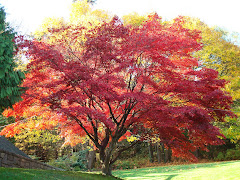
Beautiful Murano and Mother of Pearl 19 inch necklace.
What is Mother of Pearl?
Two substances actually combine to create mother of pearl. The first is plates of aragonite, a material which is secreted by the mollusk. Aragonite contains calcium carbonate and conchiolin, a natural protein. Alone, the plates are very hard, but also very brittle. As a result, the organism also secretes organic material similar to silk to layer between the plates. The result is a strong, flexible material which can withstand hard use.
Mollusks create mother of pearl to protect themselves. In addition to forming part of the shell, mother of pearl also insulates mollusks from bacterial infection, and reduces irritation from organic material which drifts into the shell. Irregularities often form in the mother of pearl as a result of irritation. If the irritation is extensive enough, the mollusk will form a large bump, prized in the human world as a pearl. Only the outer layer of the pearl is covered in mother of pearl, which is why it is important to care well for pearls so that they do not crack, revealing the source of irritation beneath.
The pearly lining of mollusk shells has long been noted by people living near the ocean. Many early cultures used mother of pearl extensively in jewelry, and it came to be highly prized. Although the popularity of mother of pearl has waned, many modern cultures can still appreciate the beauty of mother of pearl jewelry, and elaborate furniture inlays. Some homes integrate mother of pearl into tiles and other fixtures, although it is no longer used as extensively as it once was.
What is Murano?To make Murano glasses, a silicate glass is heated to a liquefied state, using intense heat. The liquid is often mixed with other chemical compounds that affect the color, texture and opacity of the finished product. As the glass slowly transforms from liquid to solid, a glass maker can mold it into whatever shape is desired, from tiny beads to fragile vases or lamps.
The glassmakers of Murano are credited with inventing or modernizing many varieties of glass, including the popular millefiori beads. These intricate beads are created by the layering of many different colors of glass during the solidifying process, which can then be formed into tiny patterns of flowers and geometric shapes. Murano glass also includes some varieties of white milk glass, and aventurine glass, which has gold and copper colored shimmers.
Murano glass and its history form much of the tourist trade for the island of Murano. Visitors, in addition to being able to purchase a large variety of Murano glass goods, can visit several museums dedicated to the art form, and even view glassmakers at works at one of the many glass factories. Many tourist attractions also feature glassblowing demonstrations for the tourist trade.
While the glass techniques are certainly important to the history of glassmaking, Murano glass is not universally adored. Coloring agents used in the firing process tend to produce extremely vibrant shades of blue, yellow and red. Some critics find the bright colors gaudy and disconcerting, and occasionally tacky. However, modern techniques do allow for more subtlety, and Murano glass is used in a variety of modern art pieces of high quality.




No comments:
Post a Comment